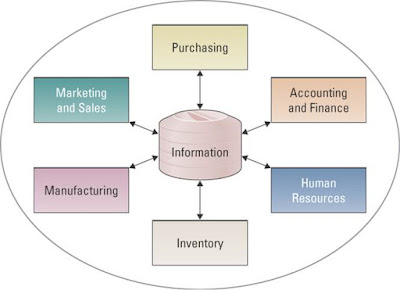MGT300- CHAPTER 1 : BUSINESS DRIVEN TECHNOLOGY
Learning outcomes:
- compare management information systems (MIS) and information technology (IT)
- describe the relationship among people, information technology and information.
- identify four different departments in a typical business and explain how technology help them to work together.
- compare the four different types of organizational information culture and decide which culture applies to your school.
INFORMATION TECHNOLOGY’S ROLE IN BUSINESS
 |
| INFORMATION TECHNOLOGY SYSTEM IS EVERYWHERE IN BUSINESS |
INFORMATION TECHNOLOGY'S IMPACT ON BUSINESS OPERATIONS.
INFORMATION TECHNOLOGY BASICS
- Information technology(IT)- is a field concerned with the use o technology in managing and processing information. information technology is an important enabler of business success and innovation.
- management information system (MIS)- a general name for the business function and academic discipline covering the application of people, technology and procedures to solve business problem. MIS is a business function, similar to Accounting, Finance, Operation, and Human Resources.
DATA, INFORMATION AND BUSINESS INTELLIGENT.
- Data- is the raw fact that describe the characteristic of an event.
- Information- data converted into a meaningful and useful contex.
- Business Intelligent- applications and technologies that are used to support decision making efforts.
IT RESOURCES
-PEOPLE
-INFORMATION TECHNOLOGY TO WORK WITH
-INFORMATION
IT CULTURES includes:
- Information functional culture - employees use information as a means of exercising influence or power over others
- Information sharing culture - employees across departments trust each other to use information especially about problems and failures to improve their performance.
- Information inquiring culture - employees across departments search for information to better understand the future and aligh themselves with current trends and new directions.
- Information discovery culture - employees across departments are open to new insights about crisis and radical changes and seeks ways to create competitive advantages.
THANK YOU ;)








Comments
Post a Comment